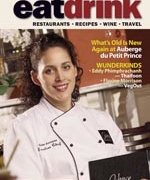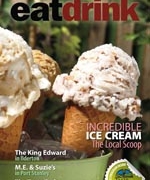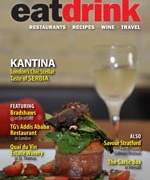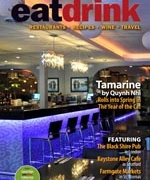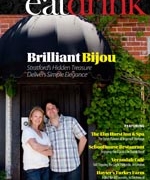Table for One Around the World
Even as a reluctant celebrity, Anthony Bourdain continues to unwittingly mould his career as a chef into that of a renowned TV personality and bestselling author, who has been treating readers to his irreverent style of writing since 2001 when his book, Kitchen Confidential – about the darker side of restaurant kitchens – became a hit. Since then, Bourdain has had no shortage of writing credits to his name and he sets out to find the nasty bits that make cooking and travelling darkly entertaining. Bourdain is an executive chef in Manhattan, as well as a multi-tattooed, chain-smoking, well-travelled, wickedly funny writer.
In his latest book, No Reservations: Around the World on an Empty Stomach, Bourdain presents an illustrated journal of exotic foods and far-flung locations with a mix of glossy photos and opinionated observations. Chefs love to travel the world because there is no shortage of great meals and Bourdain shares all his experiences, good or bad. Asian food is his first true love. African food drives him to gut-wrenching illness. Every meal in Beirut is tainted by the looming outbreak of war. In his previous books, Bourdain typically has no trouble relying on words to paint pictures of the no-holds-barred cooking/travelling/eating lifestyle of which he has become an ambassador. No Reservations takes us deeper into this world with photos depicting the carefree antics of Bourdain’s motley crew surrounded by tables of exotic delicacies and beautiful scenery. He visits all points of the compass and the photos cover much ground: jungle scenes in Borneo, war-torn cities in the Middle East, lanterned-streets in Beijing, snow-addled tundra in Iceland, dusty villages in Africa, cityscapes throughout the United States, rice fields in Indonesia. But Bourdain (as he is wont to do) also looks through his photo lens at the bizarre side of cooking with a photo shoot of plenty of unusual foods: steamed shark heads in Singapore, Ostrich egg omelettes cooked in a dirt hole in Namibia, gilded pig snout in Quebec, rattlesnake wine in Texas.
With food as the meat and bones of the book, travel becomes the soul of his writing. Although the book bears the same title as Bourdain’s television series, he tries to make it an extension of the show rather than just a companion book. This is most evidenced by the travel advice he shares along the way by giving travel tips, hotel recommendations, and restaurant suggestions everywhere from Montreal to Saigon; sort of his own personal best-of-the-best Lonely Planet guide. By delving into the real flavour of every nook and cranny of his destinations, Bourdain exposes that indigenous dishes, and the local chefs who cook them, are capable of extending the definition of geography and culture.

